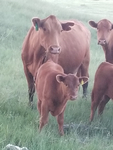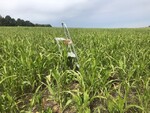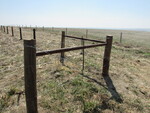by: Jason Padgett
One of the beauties of pesto is that you have a wide range of options in how it is prepared. Any ingredient you think might be good in the mix, probably will be. Here, I will tell you a basic recipe with few variances. Try it, if you like it, and you will, make some more and customize the recipe to fit your tastes.
What you will need:
Ingredients:
fresh basil
pine nuts
minced garlic
parmesan cheese
sun-dried tomatoes
olive oil
salt and pepper
Equipment:
blender
large bowl
sealable jars
salad spinner or a plate covered in paper towels
-Pick your basil, you will use plenty of it. Harvest before the plant flowers, after flowering, the leaves become more bitter.
-Pluck the leaves and put them in the bowl.
-Fill the bowl with water and work the leaves in the water to wash them.
-Grab a handful of leaves and dry them in the spinner or on the plate covered with paper towels. They don't have to be perfectly dry, but you don't want excess water in your pesto either.
-Put the leaves in the blender and fill it about 3/4 of the way full. Not loosely, you don't want to pack them down tight, but do push the basil down and get it fairly dense.
-Add a handful of pine nuts.
-Add a handful of parmesan cheese.
-Add a good forkful of minced garlic.
-Add a handful of chopped up sun-dried tomatoes.
-Salt and pepper.
-Start adding olive oil. This is your other main ingredient, and you might be surprised how much you need, I was the first time. Pour in olive oil until you start to see it accumulate in the bottom of the blender.
-Start your blender, you may need to stop a few times to work your ingredients down a bit and add more oil, you know you have added enough olive oil when the ingredients cycle through the blender on their own, and you can see the churning on the top of the blender.
-At this point, there is some room in the blender, so I add another handful of basil, a bit more oil, and get the consistency back to freely churning.
-Smell your creation and imagine all of the ways you can use it.
-Put it in jars, seal them tight and put them in the fridge. Your pesto is not canned, and cannot be stored outside of the fridge.
The taste of your pesto will change slightly over time, but I usually use it faster than it can mature.
Make changes to your recipe: try cilantro, cumin, oregano, more tomatoes, peppers, a little lemon juice, whatever you can think of. You can make Italian themed pesto, or Mexican, or Indian. Go wild.
Click on photos to view slide show
















